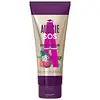What's inside
What's inside
 Benefits
Benefits

 Concerns
Concerns

 Ingredients Side-by-side
Ingredients Side-by-side

Water
Skin ConditioningStearyl Alcohol
EmollientSilicone Quaternium-26
EmollientBehentrimonium Chloride
PreservativeCetyl Alcohol
EmollientIsopropyl Alcohol
SolventParfum
MaskingLimonene
PerfumingDisodium EDTA
Polysorbate 20
EmulsifyingGlycerin
HumectantCitrol
PerfumingLinalool
PerfumingButylene Glycol
HumectantMicrocitrus Australasica Fruit Extract
Tasmannia Lanceolata Leaf Extract
Skin ConditioningBackhousia Citriodora Leaf Extract
AstringentWater, Stearyl Alcohol, Silicone Quaternium-26, Behentrimonium Chloride, Cetyl Alcohol, Isopropyl Alcohol, Parfum, Limonene, Disodium EDTA, Polysorbate 20, Glycerin, Citrol, Linalool, Butylene Glycol, Microcitrus Australasica Fruit Extract, Tasmannia Lanceolata Leaf Extract, Backhousia Citriodora Leaf Extract
Hydrofluorocarbon 152a
Alcohol Denat.
AntimicrobialIsohexadecane
EmollientIsododecane
EmollientPPG-5-Ceteth-20
EmulsifyingPropylene Glycol Dibenzoate
Skin ConditioningDiisopropyl Sebacate
EmollientOctafluoropentyl Methacrylate
Isopropyl Lauroyl Sarcosinate
Skin ConditioningLinoleamidopropyl Dimethylamine Dimer Dilinoleate
Skin ConditioningHippophae Rhamnoides Fruit Oil
Skin ProtectingSimmondsia Chinensis Seed Oil
EmollientLagenaria Sphaerica Seed Oil
Skin ConditioningOrbignya Oleifera Seed Oil
EmollientMoringa Oleifera Seed Oil
EmollientOleyl Alcohol
EmollientEthylhexyl Methoxycinnamate
UV AbsorberC13-15 Alkane
SolventParfum
MaskingCitronellol
PerfumingLimonene
PerfumingCitral
PerfumingHydrofluorocarbon 152a, Alcohol Denat., Isohexadecane, Isododecane, PPG-5-Ceteth-20, Propylene Glycol Dibenzoate, Diisopropyl Sebacate, Octafluoropentyl Methacrylate, Isopropyl Lauroyl Sarcosinate, Linoleamidopropyl Dimethylamine Dimer Dilinoleate, Hippophae Rhamnoides Fruit Oil, Simmondsia Chinensis Seed Oil, Lagenaria Sphaerica Seed Oil, Orbignya Oleifera Seed Oil, Moringa Oleifera Seed Oil, Oleyl Alcohol, Ethylhexyl Methoxycinnamate, C13-15 Alkane, Parfum, Citronellol, Limonene, Citral
Ingredients Explained
These ingredients are found in both products.
Ingredients higher up in an ingredient list are typically present in a larger amount.
Limonene is a fragrance that adds scent and taste to a formulation.
It's found in the peel oil of citrus fruits and other plants such as lavender and eucalyptus. The scent of limonene is generally described as "sweet citrus".
Limonene acts as an antioxidant, meaning it helps neutralize free radicals.
When exposed to air, oxidized limonene may sensitize the skin. Because of this, limonene is often avoided by people with sensitive skin.
The term 'fragrance' is not regulated in many countries. In many cases, it is up to the brand to define this term. For instance, many brands choose to label themselves as "fragrance-free" because they are not using synthetic fragrances. However, their products may still contain ingredients such as essential oils that are considered a fragrance.
Learn more about LimoneneParfum is a catch-all term for an ingredient or more that is used to give a scent to products.
Also called "fragrance", this ingredient can be a blend of hundreds of chemicals or plant oils. This means every product with "fragrance" or "parfum" in the ingredients list is a different mixture.
For instance, Habanolide is a proprietary trade name for a specific aroma chemical. When used as a fragrance ingredient in cosmetics, most aroma chemicals fall under the broad labeling category of “FRAGRANCE” or “PARFUM” according to EU and US regulations.
The term 'parfum' or 'fragrance' is not regulated in many countries. In many cases, it is up to the brand to define this term.
For instance, many brands choose to label themselves as "fragrance-free" because they are not using synthetic fragrances. However, their products may still contain ingredients such as essential oils that are considered a fragrance by INCI standards.
One example is Calendula flower extract. Calendula is an essential oil that still imparts a scent or 'fragrance'.
Depending on the blend, the ingredients in the mixture can cause allergies and sensitivities on the skin. Some ingredients that are known EU allergens include linalool and citronellol.
Parfum can also be used to mask or cover an unpleasant scent.
The bottom line is: not all fragrances/parfum/ingredients are created equally. If you are worried about fragrances, we recommend taking a closer look at an ingredient. And of course, we always recommend speaking with a professional.
Learn more about Parfum